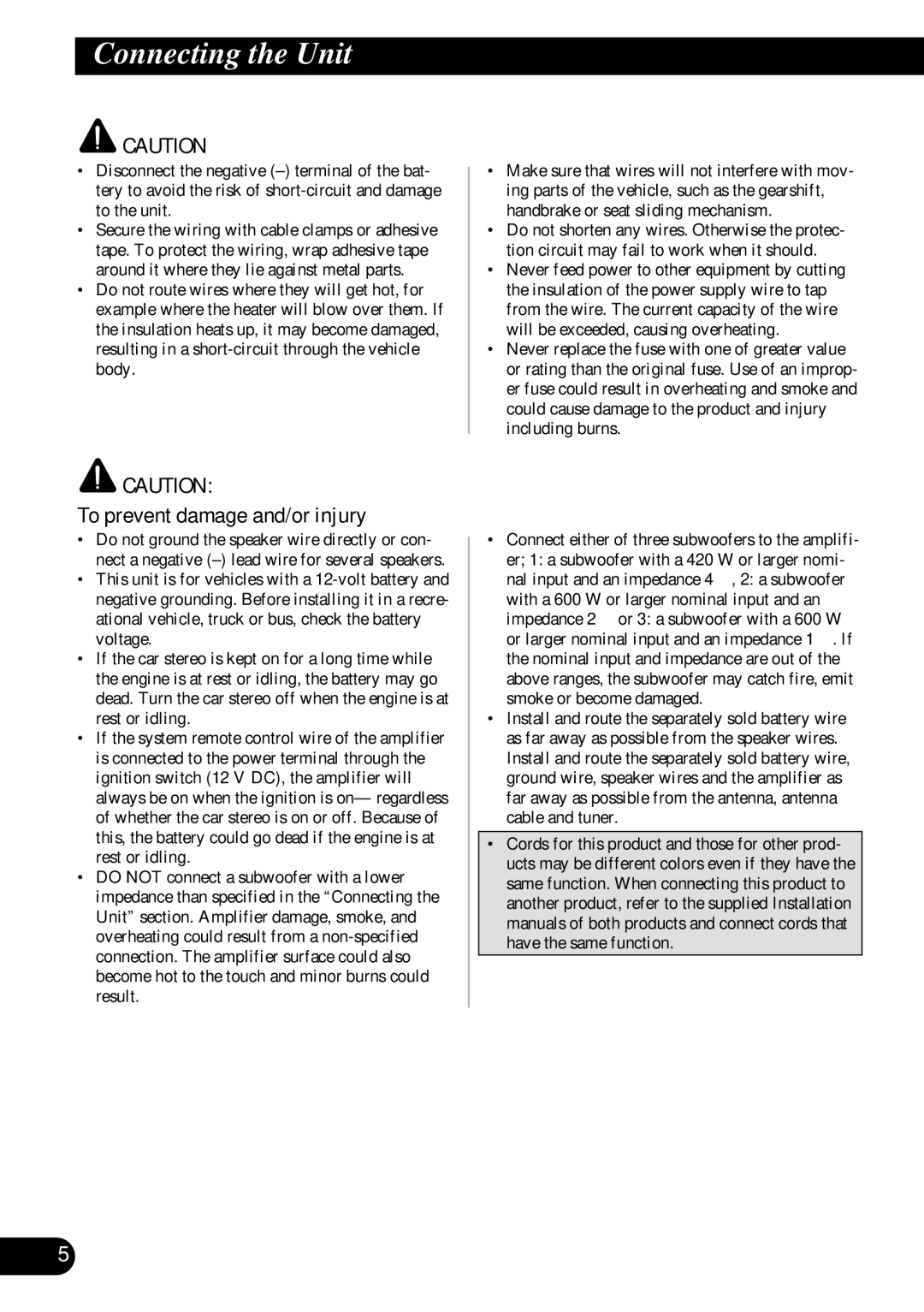PRS-D1000M specifications
The Pioneer PRS-D1000M is a versatile and powerful car amplifier designed to enhance the audio experience in vehicles. Known for its robust performance and innovative features, this amplifier is ideal for enthusiasts seeking to elevate their sound system.One of the main features of the PRS-D1000M is its impressive power output. It delivers up to 1000 watts of maximum power, allowing users to drive high-performance subwoofers and achieve deep, thunderous bass. With its RMS power rating of 500 watts at 2 ohms, this amplifier ensures that even the most demanding audio setups can be accommodated, making it suitable for both daily driving and competition use.
The PRS-D1000M employs Class D technology, which is crucial for efficiency and heat management. Class D amplifiers convert a higher percentage of the power drawn from the vehicle's electrical system into usable output, resulting in less heat generation and lower energy consumption. This is particularly beneficial for car audio systems, where space and power are often at a premium.
Another notable characteristic is the built-in low-pass filter, which allows users to tailor the sound by eliminating higher frequencies that can muddy the bass response. The variable frequency adjustment lets users set the cutoff point according to their specific subwoofer and listening preferences, resulting in a more refined audio experience.
The Pioneer PRS-D1000M also features a bass boost function, which lets users increase low-frequency output for a more pronounced bass response. This is especially useful for those who love bass-heavy music genres. The amplifier's compact design makes it easy to install in various locations within the vehicle, ensuring that it doesn't compromise valuable space.
Furthermore, the amplifier is equipped with RCA inputs for seamless integration with other audio components. It includes speaker-level inputs, allowing it to connect to factory audio systems without needing to replace the head unit.
In conclusion, the Pioneer PRS-D1000M is engineered for performance, efficiency, and flexibility. With its powerful output, advanced technologies, and user-friendly features, it is an excellent choice for anyone looking to upgrade their car's audio system and enjoy a superior listening experience on the road.

